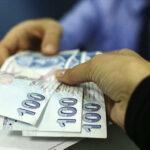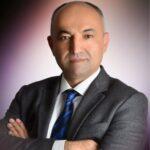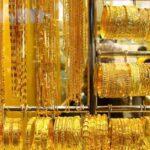The Central Bank (CB) reduced the policy rate by another 100 basis points to 14%.
“Cumulative impact of the recent policy decisions will be monitored in the first quarter of 2022 and during this period, all aspects of the policy framework will be reassessed to create a foundation for a sustainable price stability,” said in the CB’s statement that couldn’t be read as a clear direction by analysts. Some analysts expect the rate to be further lowered while others said it may be kept steady in the first quarter (Q1) of 2022.
The CB doesn’t have a clear communication, according to the market players. The market specialists emphasize three points that pave the way for more interest rate cuts. The first one starts with the CB’s following expression: “The reintroduction of travel restrictions and lockdowns due to the new variants keeps the downside risks to global economic activity alive and raises the uncertainty. Analysts interpreted this warning that the CB pointed out the need for another interest rate cut due to the problems stemming from the world. The bank may lower the rate even in Q1 if the downward risks increase.
Second, the CB emphasized that the usage of limited room was completed with a 1-point rate cut while the change in the policy rate will take shape in line with the demand inflation. The current level in foreign exchange (FX) rates and inflation will already pressure the domestic demand, according to the economic world. As analysts say, the low demand may strengthen the CB’s hand for the rate cut although it doesn’t think about a considerable change in the policy rate during Q1.
Third, the CB also pointed out various communications in developed countries. This was read that the European Central Bank (ECB) is considered as an indicator for the direction of the monetary policy instead of the Federal Reserve and that the opportunity for another interest rate cut may be created as the ECB hasn’t started to raise the policy rate yet.
Although the policy rate was reduced in line with the expectations, USD/TRY, which hit 15.70 yesterday, broke another record at 16.20 this morning. But why do FX rates continue to hike? Although the expectation was the rate cut, the possibility to keep the rate steady was priced in an environment, where USD/TRY saw above 16.00 and inflation is estimated to exceed 30%, according to economists.
Moreover, no clear message was received about the end of the interest rate cut. However, analysts also don’t expect sharp fluctuations in FX rates. In line with the CB’s interventions in the markets, USD/TRY is estimated to end the year at 14.00.
DAILY AGENDA
The short-term external debt stock surged by 9.9% to USD 125.5bn in October, compared to the end of 2020, according to the CB.
The number of newly established companies increased by 17.6% to 10,192, while the number of liquidated firms jumped 57.4% to 1,547 in November compared to the same month of the previous year, according to the Union of Chambers and Commodity Exchanges of Turkey (TOBB).
The Parliament will vote for the legislative proposal on the Central Government’s 2022 budget and the Central Government’s Final Account for 2020.
Meanwhile…
>> President Recep Tayyip Erdogan announced that the minimum wage, which directly concerns 7 million people and indirectly all citizens, has increased by 50% to TRY 4,250. Erdogan also told that the minimum wage will be exempt from income tax and stamp duty. The business world representatives said the hike met the expectations. However, the total cost of an employee to the employer will be TRY 5,879.
>> President Recep Tayyip Erdogan and Tesla and SpaceX’s Founder Elon Musk held a virtual meeting to discuss collaboration between the country’s public and private sector institutions and the company in different fields including satellite and space technologies.
>> The price of gasoline has been raised by TRY 0.56 per liter, according to the Energy Oil Gas Supply Stations Employers’ Union (EPGIS).










